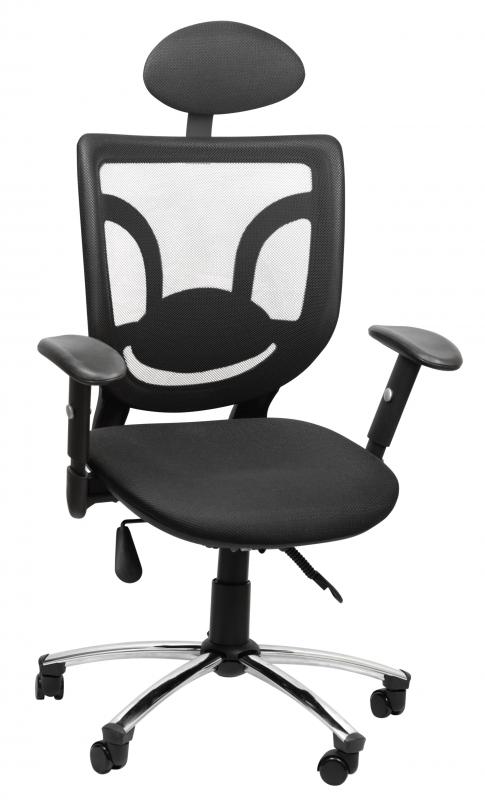At WiseGEEK, we're committed to delivering accurate, trustworthy information. Our expert-authored content is rigorously fact-checked and sourced from credible authorities. Discover how we uphold the highest standards in providing you with reliable knowledge.
What is an Ergonomic Seat?
An ergonomic seat is a chair or stool designed to reduce back, hand, and leg muscle strains. Ergonomic seats are outfitted with sufficient cushioning and back support to withstand hours of continuous sitting. They are available in various styles including balance balls, kneeling chairs, and saddle seats. Accessories often paired with ergonomic seats include foot stools, head rests, and wrist guards. Businesses have adopted ergonomic seating to make their employees more comfortable while increasing productivity.
Ergonomic seat manufacturers focus on keeping a user’s back and upper legs straight while seated. An ergonomic seat is typically designed with a 90-degree or right angle in mind. The user’s back forms the vertical axis of the angle while the upper legs form the horizontal axis. This focus on right angles reduces slouching and compact seating that can place strain on lower back muscles. Ergonomic chairs and stools often feature cushioned seats that encourage users to stay stationary for extended periods.

Furniture designers have expanded their ergonomic seating options beyond standard computer chairs. The balance-ball chair promotes proper back and leg position by forcing users to maintain their balance. Kneeling chairs utilize knee cushions instead of back rests to keep designers and artists from slouching too far over their drawing tables. Another ergonomic option is the saddle seat, which features a contoured cushion that encourages wider placement of the legs.

The benefits of an ergonomic seat can be enhanced using accessories that address proper positioning for feet, heads, and hands. An ergonomic chair may be packaged with a stool that keeps the user’s feet flat while seated. Designers also encourage users to keep their backs straight by adding head rests to ergonomic seats. These rests can keep heads from drifting too far back, which can lead to lower back strain and poor leg positioning. Ergonomic seats can be combined with wrist guards installed on desks to keep users from straining their hands while typing.
Ergonomic seats can be used by businesses to ensure greater efficiency and improved employee health. An ergonomic seat is intended to reduce or eliminate muscular strains that can cause an employee to take frequent breaks. A company can invest in ergonomic seats to eliminate these breaks and reduce the time needed to complete projects. These specially designed seats can often protect employees from muscular ailments like carpal tunnel syndrome. Employees may be able to reduce medical costs associated with these conditions by using ergonomic chairs.
AS FEATURED ON:
AS FEATURED ON:












Discuss this Article
Post your comments